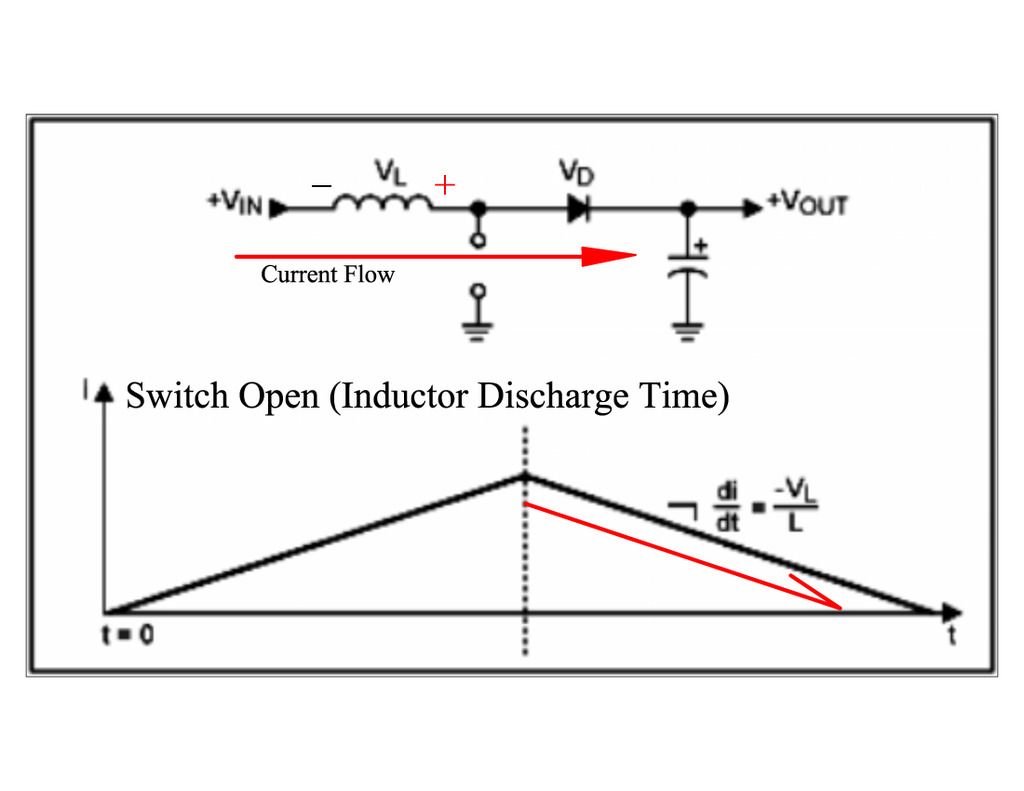I'd like to copy part of Ufopolitics post here to discuss single one topic :
what is the reason why we can have DC to DC converters or in other words : what is which charges capacitor to the voltage higher then the power source in simple boost converter ?
Charge Phase
A basic boost configuration is depicted in Figure 5. Assuming that the switch has been open for a long time and that the voltage drop across the diode is negative, the voltage across the capacitor is equal to the input voltage. When the switch closes, the input voltage, +VIN, is impressed across the inductor and the diode prevents the capacitor from discharging +VOUT to ground. Because the input voltage is DC, current through the inductor rises linearly with time at a rate proportional to the input voltage divided by the inductance.

Figure 5. Charging phase: when the switch closes, current ramps up through the inductor.
Discharge Phase
Figure 6 shows the discharge phase. When the switch opens again, the inductor current continues to flow into the rectification diode to charge the output. As the output voltage rises, the slope of the current, di/dt, though the inductor reverses. The output voltage rises until equilibrium is reached or:
VL = L × di/dt
In other words, the higher the inductor voltage, the faster the inductor current drops.

Figure 6. Discharge phase: when the switch opens, current flows to the load through the rectifying diode.
In a steady-state operating condition, the average voltage across the inductor over the entire switching cycle is zero. This implies that the average current through the inductor is also in steady state. This is an important rule governing all inductor-based switching topologies.
The question is : is that the current from inductor which really charges the capacitor or is that only a EMF alone ? You see - the question is so important that it needs answer.
what is the reason why we can have DC to DC converters or in other words : what is which charges capacitor to the voltage higher then the power source in simple boost converter ?
Charge Phase
A basic boost configuration is depicted in Figure 5. Assuming that the switch has been open for a long time and that the voltage drop across the diode is negative, the voltage across the capacitor is equal to the input voltage. When the switch closes, the input voltage, +VIN, is impressed across the inductor and the diode prevents the capacitor from discharging +VOUT to ground. Because the input voltage is DC, current through the inductor rises linearly with time at a rate proportional to the input voltage divided by the inductance.

Figure 5. Charging phase: when the switch closes, current ramps up through the inductor.
Discharge Phase
Figure 6 shows the discharge phase. When the switch opens again, the inductor current continues to flow into the rectification diode to charge the output. As the output voltage rises, the slope of the current, di/dt, though the inductor reverses. The output voltage rises until equilibrium is reached or:
VL = L × di/dt
In other words, the higher the inductor voltage, the faster the inductor current drops.

Figure 6. Discharge phase: when the switch opens, current flows to the load through the rectifying diode.
In a steady-state operating condition, the average voltage across the inductor over the entire switching cycle is zero. This implies that the average current through the inductor is also in steady state. This is an important rule governing all inductor-based switching topologies.
The question is : is that the current from inductor which really charges the capacitor or is that only a EMF alone ? You see - the question is so important that it needs answer.



Comment